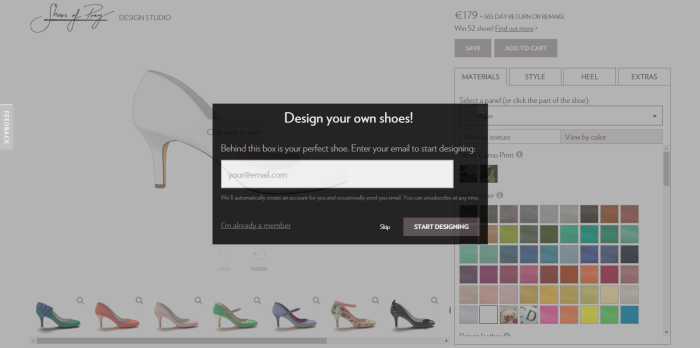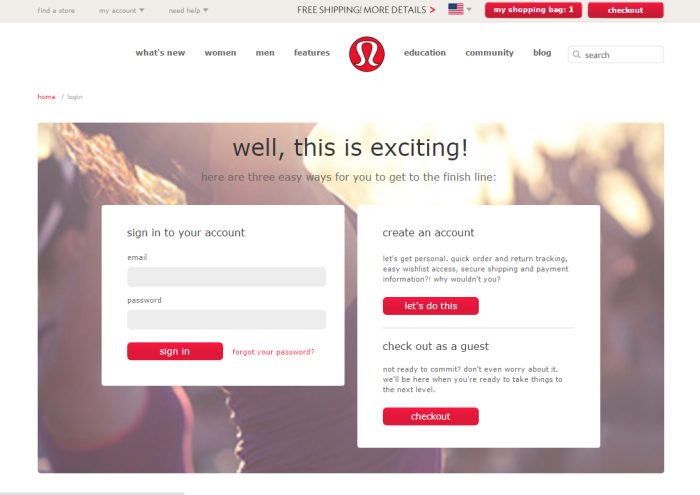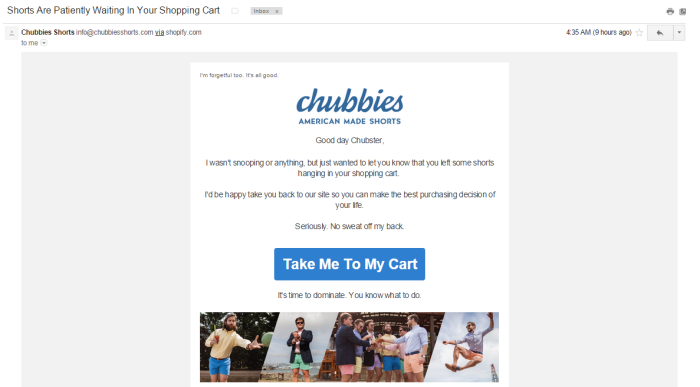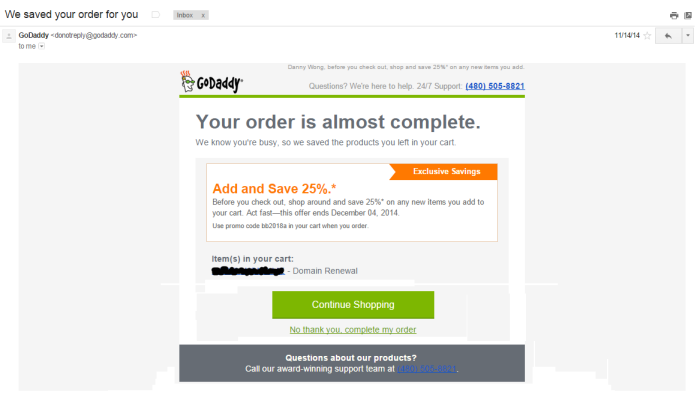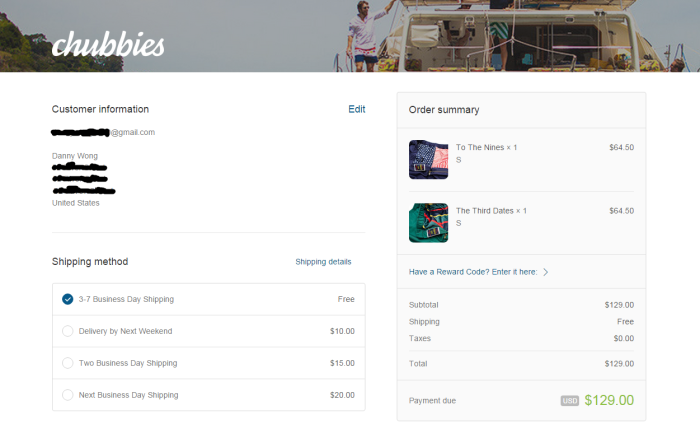How to Use Abandoned Cart Emails to Increase Your Store’s Revenue
More than two-thirds of potential customers who fill their shopping carts abandon it. For retailers, this equates to nearly $4 trillion worth of lost sales. With all of the work brands do to drive shoppers down the purchasing funnel, why is shopping cart abandonment still such a prolific issue?
Companies intent on growing their bottom line ought to invest in intelligent abandoned cart emails to re-engage buyers who were not yet ready to commit to completing a purchase or unintentionally exited their shopping session. For many brands, cart abandonment emails are a significant driver of end-of-funnel conversions. Last year, Mike Arsenault published a case study on KISSmetrics which revealed how camera clip maker Peak Design recovered 12% of its abandoned carts using email remarketing. By sending up to two emails to users who closed out their shopping session prior to completing a purchase, Peak Design was able to recapture lost consumer interest and increase its revenue.
Though most store owners assume potential customers abandon their carts because they are not yet ready to purchase, many fail to buy due to technical error. Shopify’s Dan Wang explains, “You have to understand that customers often abandon their carts without meaning to do so, for example because the website crashed, because the process was complicated, or because the site timed out.” Brands that want to remarket to users who reached the checkout stage of the purchasing funnel should consider these tips for leveraging abandoned cart emails to grow overall sales.
Acquiring essential contact information
To convince shoppers to come back, brands must first be proactive about acquiring emails. Several times during the customer shopping experience, retailers should prompt visitors to share their email address. Three ways to gather critical contact information include:
- Offer discounts, promotions and other special deals. Incentivize users to opt-in to email marketing from you. Most visitors that land on Crocs.com almost immediately are asked to sign up for email updates from the brand.
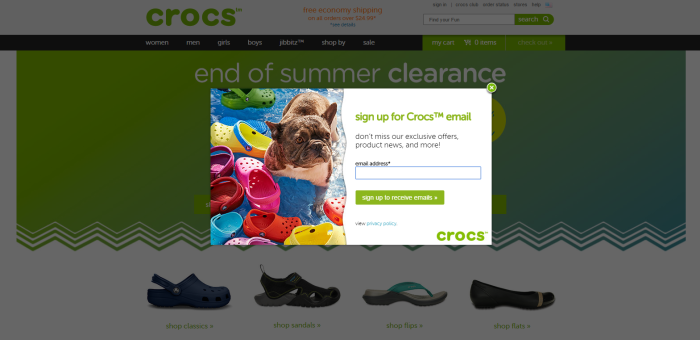
- Make membership meaningful. With a store account, give shoppers special access to different areas of your site. Perks motivate customers to register for an account using their email address and sign in each time they shop.
- Include a no-commitment guest checkout process. Long before buyers start entering their credit card details, ask for their name, mailing address and email where you will deliver the order confirmation. Once you capture their contact information, you will have plenty of opportunities to remarket to them.
The anatomy of the perfect abandoned cart email
The most successful digital store owners have the solution for cart abandonment down into a science. To mimic their success, Ecommerce brands should prioritize the production of the emails users will receive. Of course, to follow-up with shoppers in a manner that does not come off as invasive, pushy or otherwise unsavory, here are 16 important elements of a killer abandoned cart email.
- Strong subject line. Abandoned cart emails are typically unexpected. The surprise alone may deter recipients from opening your email. Avoid having your message go ignored or marked as spam by including a clear and straightforward subject line reminding the customer that they left a few items in their shopping cart.
- Descriptive preview text. Regularly neglected, preview text can be a critical differentiator for your marketing emails since consumers are quick to archive, delete or skip over messages that fail to immediately pique their interest.
- Customer-centric focus. Though the primary metric for measuring the success of cart abandonment emails is increased sales, Ecommerce marketers must resist the temptation to pursue a hard-sell and should craft their message in a manner that caters to each buyer’s unique needs.
- Fun copy. Most emails are boring. Stand out from the crowd with uplifting copy that buyers can’t wait to read. The more personality you show, the more likely customers will be attracted to your brand.
- Engaging images or illustrations. Add visuals to keep the content light, funny and entertaining. Product shots, user-generated photos and light-hearted gifs are always welcome.
- Saved shopping cart. Include a direct link to your customer’s already-filled shopping cart to streamline the checkout process. Also, let shoppers know you are holding onto their items for a limited-time only to encourage them to make a prompt decision.
- Last minute discount. Push price-sensitive customers to pull the trigger now with an exclusive promotion to get them to complete their purchase. But do this sparingly because you will want to avoid conditioning shoppers into purposely abandoning their carts with the expectation of receiving a remarketing coupon later.
- Suggest related items. There is a chance that shoppers did not actually want any of the products they added to their cart. Despite that, they may still be high value customers. Recommend related items they may want to purchase in addition to what is already in their cart or as the perfect alternative to their earlier choices.
- Clever call-to-actions (CTAs). After a recipient opens your abandoned cart email, your main goal is to get them back on your site to complete their purchase. Use different CTAs to reel them back in. GoDaddy gives you two choices: i) Continue shopping or ii) No thank you, complete my order. Instead of giving customers the option to cancel their order entirely, GoDaddy allows you to say ‘no’ while you actually say ‘yes’.
- Time-based triggers. Send your first email within a few hours after a shopper has abandoned her cart. In a blog post for HubSpot, Greg Wise said, “Of those who do buy after abandoning their carts, 72% do so within 24 hours.” But you should never stop there. Some customers need several reminders before they are ready to checkout. Litmus’s Chad White recommends the cart abandonment email sandwich.
- Reiterate your returns policy. Sometimes, shoppers are hesitant to purchase because they are worried that they cannot undo an impulse buy or return product they are not fully satisfied with. Make your returns policy clear to ease their concerns and give customers peace of mind.
- Targeted customer reviews. Add social proof to at least one of your follow-up emails by highlighting the positive experiences other customers had with the products your shopper added to her cart.
- Brand contact information. Customers feel confident enough to make a purchase when they believe a brand’s management and customer service teams are accessible. So that buyers know how to reach you, share your store’s phone number, email address, Twitter handle, Facebook page, and links to other social media channels you are active on.
- Opt-out links. Let recipients unsubscribe from email follow-up Any attempts to hide or obscure the opt-out option may lead to shoppers marking your emails as spam moving forward. Avoid annoying customers and earn their loyalty and trust with a straightforward unsubscribe button.
Maximizing the value of shopping cart abandonment emails
By default, most marketers focus exclusively on optimizing and updating their abandoned cart emails. High-converting email remarketing strategies, instead, place equal emphasis on other aspects of the customer experience. Three secrets to re-engaging lost shoppers are:
- Consider when and why they abandoned. At which point during the customer journey did the buyer decide to close out their shopping window? Details such as the information they filled out, the coupons they used and their referral source tell a revealing story about their purchase motivations and reservations. Dig into your analytics to identify interesting customer trends and behaviors.
- Personalize the post-click experience. When users agree to revisit their abandoned shopping carts, give them a special experience that will finally encourage them to complete their purchase. Perhaps there were elements missing from the original shopping cart experience that caused them to leave the first time. Or, the earlier shopping cart included confusing features such as a clumsy navigation bar or fields asking for unnecessary personal information. Conduct A/B tests to discover how to create the best post-click experience for recipients of your abandoned cart emails.
- Build mobile-friendly emails and pages. Consumers spend more time online on their smartphones and tablets than they do on desktops and laptop computers. While on-the-go, people also shop on their phones. According to investment bank Barclays, “Consumers are set to spend £53.6 billion a year using their smartphones and tablets by 2024, compared with the £9.7 billion spent today.” Already, millions of consumers buy products online using their mobile devices; Ecommerce stores lose out on significant revenue opportunity by neglecting to utilize responsive design for their emails and landing pages.
Final thoughts
Do not forgo abandoned cart emails. Earlier shoppers that landed on your site and walked away from their carts may ultimately turn to your competitor to fulfill their needs. Without a prompt from you to return to your store, they will likely complete their purchase elsewhere.
By automating cart abandonment emails, you remind buyers who are eager to continue their shopping experience to finally place their order with you — and not one of your competitors.
What must-haves do you include in your cart abandonment emails?
